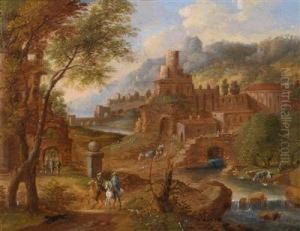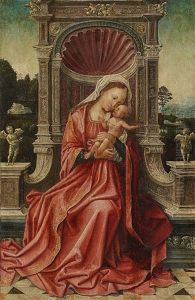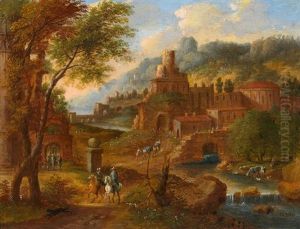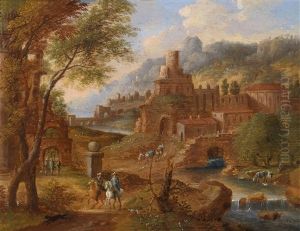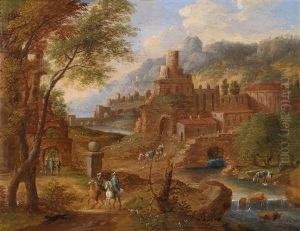Peter Van Orley Paintings
Peter van Orley, also known as Pieter van Orley or Pierre van Orley, was a Flemish painter and draughtsman born in Brussels in 1665. He is often confused with his more famous family members from the van Orley artistic dynasty, particularly Bernard van Orley, a prominent Renaissance artist. Peter van Orley, however, belongs to a later period and should be viewed within the context of the Baroque movement which dominated European art from the early 17th century until the 1740s.
Peter van Orley's work is less documented than that of his illustrious predecessor Bernard, but he is known to have been active as an artist in Brussels throughout the late 17th and early 18th centuries. His career reflects the tastes and styles of the High and Late Baroque, characterized by dramatic tension, rich coloration, and grandeur, which were part of the Catholic Counter-Reformation's emphasis on the arts as a means of religious expression.
Though specific details about his training are unclear, it is likely that Peter van Orley received artistic education within the family workshop, which was a common practice at the time. His works included religious compositions, portraits, and possibly historical scenes, following the Baroque tradition of merging dramatic realism with a sense of movement and emotional intensity.
Peter van Orley's contributions to art history are overshadowed by the scarcity of surviving works definitively attributed to him. The van Orley family's extensive artistic legacy was significantly shaped by the earlier members, and thus Peter's individual influence is difficult to ascertain. He passed away in 1735 in Brussels, and his death marks the end of the direct lineage of the van Orley family's involvement in the arts. Despite the overshadowing presence of his relatives, Peter van Orley remains a figure of interest for his role in perpetuating the family's artistic tradition into the 18th century.
